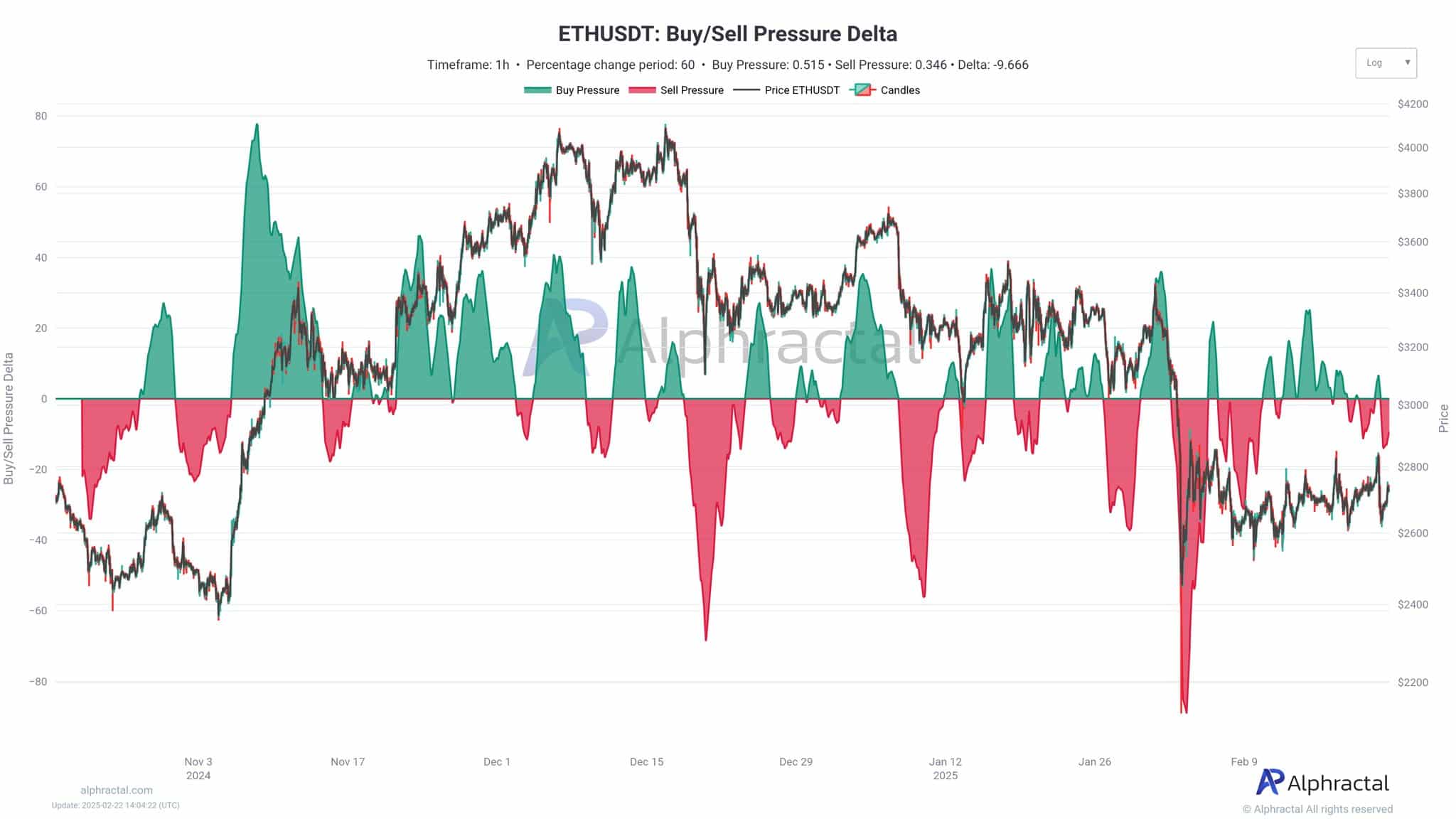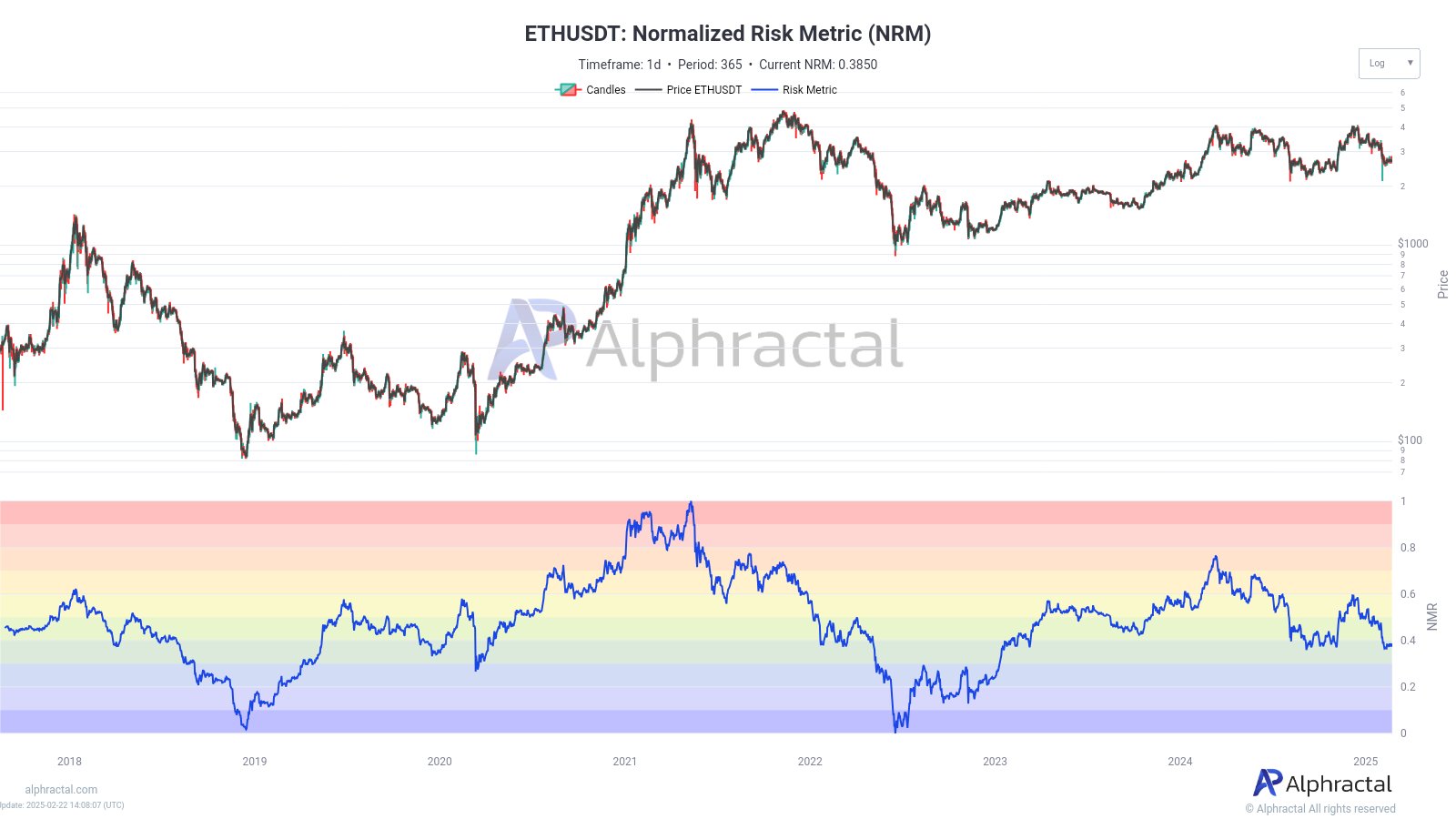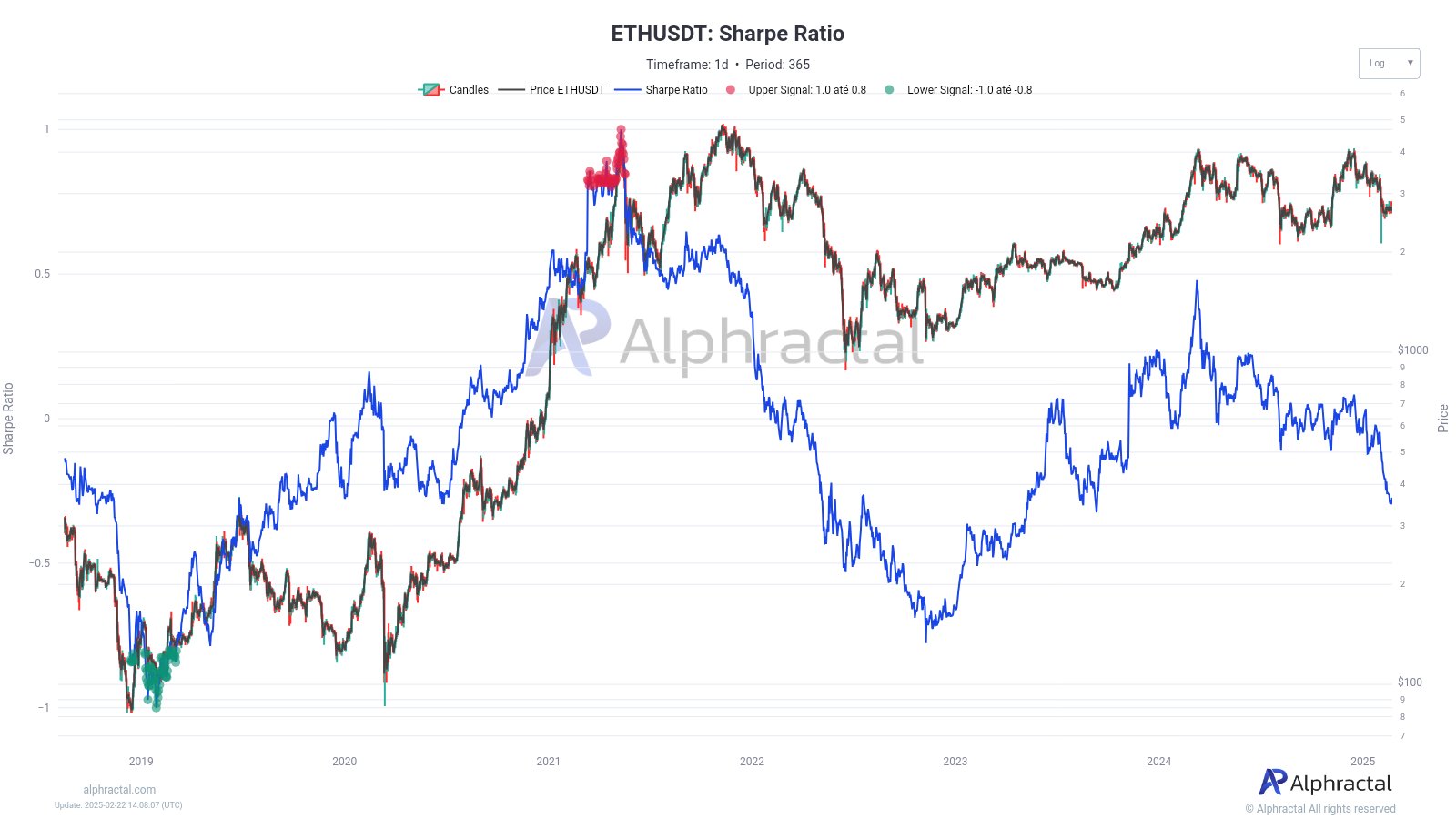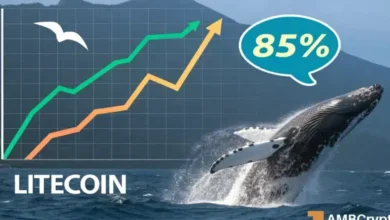Will Ethereum’s struggles continue? Risk-taking hits lowest levels since 2024

- Ethereum’s risk appetite drops, indicating caution in the market and slower growth ahead.
- The Bybit hack seems to have had a relatively mild impact, overshadowed by broader market shifts.
Ethereum’s [ETH] resilience is being tested as recent events, including the rumored Bybit hack, shift market sentiment.
Surprisingly, the sell-off following the potential security breach had less impact than the 3rd of February market downturn, which remains more influential despite unclear causes.
Beneath these short-term fluctuations, a deeper concern emerges: Ethereum’s risk appetite has been steadily declining since March 2024.
While reduced risk-taking may reduce liquidations and foster accumulation, it also signals a sluggish market. With ETH hovering around key levels, the question is whether it can maintain its position or face prolonged uncertainty.
The Bybit hack: A minor event in the larger picture?
Despite concerns over the potential Bybit hack, data suggests ETH’s sharpest declines in recent months were tied to broader risk-off moves, not isolated events.


Source: Alphractal
There was a notable price drop in late January and early February, well before news of the hack emerged.
The sell-off on the 3rd of February, which was more severe than the hack’s impact, is indicative of deeper liquidity issues and shifting sentiment.
With risk appetite declining since March 2024, Ethereum faces reduced participation from leveraged traders. While this may lead to fewer liquidations, ETH’s sluggish recovery signals ongoing market uncertainty.
Ethereum: Is the declining risk a cause for concern?
Ethereum’s risk appetite has steadily declined since March 2024, reflecting a broader shift in sentiment. The NRM chart shows a clear downtrend — investors are becoming more risk-averse.
Historically, higher risk appetite drove speculative surges, but the current market feels more cautious.


Source: Alphractal
Regulatory uncertainty and reduced leveraged participation have contributed to this trend.
While lower risk metrics reduce volatility and create a more stable environment, they also dampen the potential for explosive price movements.
Unless risk appetite recovers, Ethereum may continue to trade in a more controlled and less speculative manner.
The risk-reward paradox
As Ethereum’s risk appetite wanes, the market enters a phase of reduced volatility and fewer liquidations.
This stability could encourage long-term accumulation but may also result in stagnation, as price appreciation slows without speculative momentum.


Source: Alphractal
Historically, lower Sharpe Ratios have coincided with sideways movement, requiring patience from investors.
If Ethereum’s risk-adjusted returns remain subdued, the market could face an extended accumulation phase instead of an imminent breakout.
Ethereum: The battle of supply and demand
Ethereum’s price is increasingly influenced by institutional inflows, retail sentiment, and regulatory developments.
BlackRock’s recent $3.6 billion investment signals institutional confidence, potentially stabilizing prices and boosting adoption.
Meanwhile, retail sentiment remains divided, with some accumulating on dips and others cautious due to market uncertainty.
The possible approval of Ethereum staking ETFs in 2025 could reignite retail interest, while improving regulatory clarity in the U.S. may reduce investor uncertainty.
Ultimately, Ethereum’s future will depend on balancing institutional backing with sustained retail participation and favorable regulatory condition




